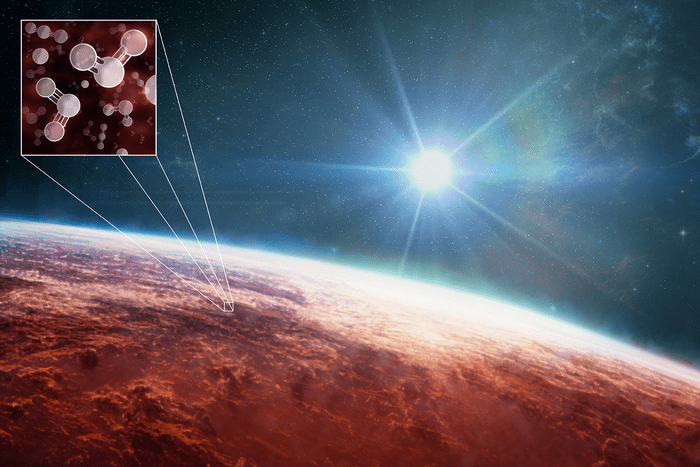The James Webb Space Telescope just won’t stop finding new stuff. This time, it was a detailed chemical and molecular picture of the atmosphere of a faraway world that is unlike anything we’ve seen so far.

The telescope’s array of highly sensitive instruments was trained on WASP-39 b‘s atmosphere, a planet with roughly the same mass as Saturn but much hotter (it is referred to as a “hot Saturn”). The planet, which lies some 700 light-years away, has an atmosphere at a toasty 1,600 degrees Fahrenheit (871 degrees Celsius). While the JWST, along with Hubble and Spitzer, have previously revealed isolated components of this planet’s atmosphere, the new readings provide a comprehensive menu of atoms, molecules, and even indications of active chemistry and fragmented clouds.
“The clarity of the signals from a number of different molecules in the data is remarkable,” says Mercedes López-Morales, an astronomer at the Center for Astrophysics | Harvard & Smithsonian and one of the scientists who contributed to the new results. “We had predicted that we were going to see many of those signals, but still, when I first saw the data, I was in awe.”
The new findings continue to make JWST a great go-to source for conducting a variety of investigations on exoplanets, as this study indicates that figuring out various bits of information about planets’ atmospheres will be possible. This includes investigating the atmospheres of smaller, rocky planets in the TRAPPIST-1 system.
The telescope that keeps on giving
The discoveries are described in five recently submitted scientific papers, available on the preprint website arXiv. One of the most groundbreaking discoveries is the first detection of sulfur dioxide in an exoplanet’s atmosphere. This molecule is produced by chemical reactions triggered by high-energy light from the planet’s parent star. A similar process creates the protective ozone layer in the upper atmosphere on Earth.
“The surprising detection of sulfur dioxide finally confirms that photochemistry shapes the climate of ‘hot Saturns,’” says Diana Powell, a NASA Hubble fellow, astronomer at the Center for Astrophysics and core member of the team that made the sulfur dioxide discovery. “Earth’s climate is also shaped by photochemistry, so our planet has more in common with ‘hot Saturns’ than we previously knew!”
Sodium, potassium, and water vapor are some of the other atmospheric components that JWST detected. These observations have been confirmed by ground- and space-based telescopes and JWST has also discovered new water features at longer wavelengths.
The JWST also observed carbon dioxide with greater clarity, with the spacecraft providing twice as much data as has been previously reported. While CO2 was found, neither methane nor hydrogen sulfide showed up in the data. If they are actually present, these molecules occur at very low levels. However, if they are in WASP 39 b’s atmosphere, it would be a significant finding for scientists making inventories of exoplanet chemistry in order to better understand the formation and development of these distant worlds.
To find these chemicals, JWST tracked WASP-39 b as it passed in front of its host star, allowing some of the star’s light to pass through the planet’s atmosphere and allowing observers to detect light from the object. Astronomers can identify the molecules by looking at the colors that are and aren’t present because different kinds of chemicals in the atmosphere absorb different colors of the starlight spectrum.
Eight times closer to its star than Mercury is to our Sun, WASP-39 b serves as an excellent testing ground for the effects of radiation from host stars on exoplanets. A deeper comprehension of the star-planet relationship should result in a better understanding of how these processes produce the variety of planets seen in the galaxy.
“We observed the exoplanet with multiple instruments that, together, provide a broad swath of the infrared spectrum and a panoply of chemical fingerprints inaccessible until JWST,” said Natalie Batalha, an astronomer at the University of California, Santa Cruz, who contributed to and helped coordinate the new research. “Data like these are a game changer.”









